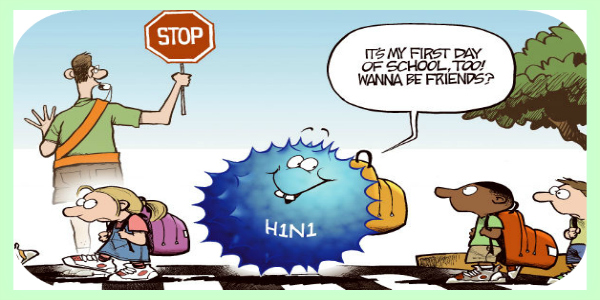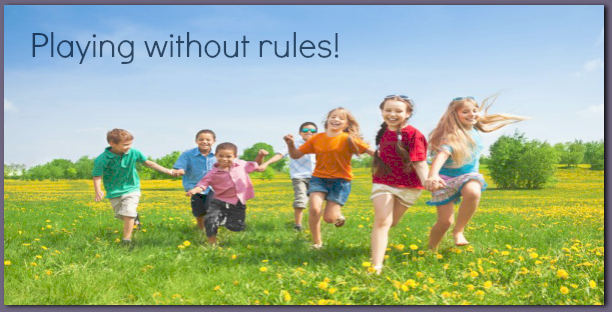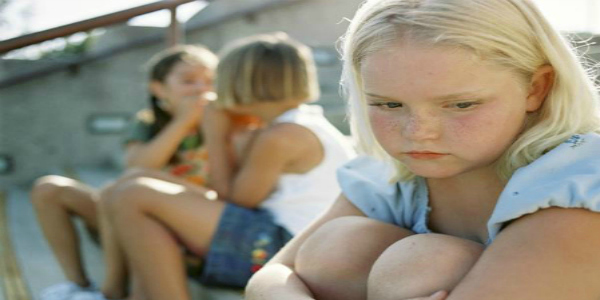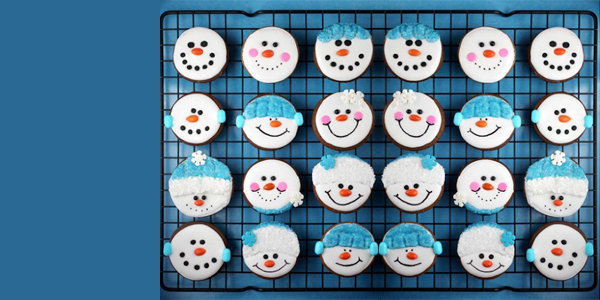Most schools and households are already taking precautionary measures against contracting swine flu. We even receive messages on how to prevent and take care to guard against swine flu. However, here’s an article that will separate facts from the myths surrounding Swine Flu. [Read more…]
Bringing your new born home; what to expect the first week
Fresh out of labor or a C Section can leave you a complex mix of social, psychological and physical changes. Your hormones are all over the place, and you might not be feeling or living the same life you imagined when the baby was unborn.
However, it helps when you know what to expect those few days when you arrive home with your bundle of joy that will make your life memorable, no matter what you feel now. [Read more…]
Hidden Toxins Inside Children’s School Supplies
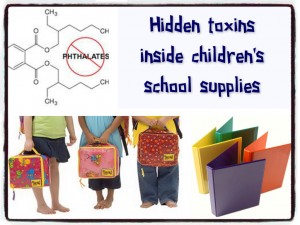 Many parents are aware of the dangers of phthalates in cosmetic products. However, phthalates are used in children’s products as well. Did you know that children are exposed to dangerous chemicals found in their backpacks and other school items?
Many parents are aware of the dangers of phthalates in cosmetic products. However, phthalates are used in children’s products as well. Did you know that children are exposed to dangerous chemicals found in their backpacks and other school items?
Phthalates are a class of chemicals, such as DEHP, DINP, DBP and DEP. They are used as softeners in PVC, vinyl products to make them soft and more flexible. You will find these chemicals in flexible toys, food packagings, shower curtains, building materials (pipes), and medical devices. Phthalates are dangerous even at low levels of exposure. They are hormone disruptors and are linked to cancer and asthma, AD(H)D, early puberty and birth defects. While phthalates have been restricted or banned in toys in many countries, protection from these dangerous chemicals does not exist for children’s school supplies. I’m deeply concerned that our children are still exposed to these chemicals!
Children are more vulnerable to toxic chemicals than adults. In their developing little bodies a small exposure to toxins translates into a big dose. They put things in their mouths and ingest chemicals from toys, plastic containers, and even dirt and dust on a daily basis.
In 2012, an American study investigated the presence of phthalates in children’s school supplies, such as backpacks, lunch boxes, ring binders and rain wear. They found that the items tested contained levels of phthalates that would be in violation of the ban for toys, if these products were considered toys. They also found that the school supplies contained more than one phthalate, clearly indicating that our children are exposed to multiple phthalates in their school supplies. Additionally, the study found that apart from phthalates, children’s PVC school supplies also contained heavy metals, such as lead, mercury, cadmium and chromium.
Many PVC backpacks and lunchboxes contain levels of phthalates that are 40-50 times higher than the limit set for toys. As school supplies are not classed as toys, companies are able to get away with adding these hazardous, toxic chemicals to their products.
PVC backpacks, ring binders, lunch boxes, raincoats, umbrellas and wellies contain excessively high levels of phthalates and our children are exposed to elevated levels of these toxic substances by using these school supplies.
Follow these easy steps to reduce your children’s exposure to phthalates:
- Avoid school supplies made with “vinyl” or “PVC”! Unfortunately some products are not properly labeled, making it difficult to determine whether they contain vinyl. Phthalates are used to soften PVC. Try to buy PVC free school supply. To identify vinyl packaging, first look for the universal recycling symbol. If it has the number “3” inside it, or the letters “V” or “PVC” underneath it, you know the product is made out of PVC and is likely to contain these chemicals.
- Do a “Sniff Test.” That “plastic” smell from plastic toys, backpacks, ring binders, raincoats, umbrellas and other plastic products usually comes from phthalates.
- Try canvas backpacks, stainless steel lunch boxes, cloth covered binders and PVC-free rain coats and boots.
- Ditch the PVC altogether if you can!
To download more information on the lab report, visit: http://chej.org/wp-content/uploads/HiddenHazardsReportFINAL.pdf
Re-published with permission from the blog of ParentEdge, a bi-monthly parenting magazine that aims to expose parents to global trends in learning and partner with them in the intellectual enrichment of their children. This blog was written by Aniko Sziraczki is a Kinesiologist with a background in Psychology, and the founder of Raising Toxin Free Children.
Playing without rules: If kids are left to their own devices
Last week, I decided to conduct a small experiment with my 7 year old son. Little did I know at that time, how it would all pan out for both of us. I was continually stressed with not being able to manage my time more effectively due to increasing work pressure and my son was getting too much screen time thanks to that. So, last Friday, I asked him to go out and play and not return until dinner time. Mentally I made a note to check on him after an hour or so, that is if he didn’t show up before that. [Read more…]
Parenting the Shy Child; Are you creating labels for your child to live by?
Picture this; on your way back from your child’s school, you meet a neighbor in the parking lot. Your neighbor makes friendly attempt at engaging in a conversation with your child, maybe even initiating a physical contact. Your child doesn’t respond, is looks visibly withdrawn and hides behind your legs to shield him from this sudden onslaught of questions that demand answers. Your neighbor just coos, “Oh he’s being shy, how sweet!” There! A label created, damage done.
Let me explain. Every child is born with a unique personality. Some like to sit back and observe rather than plunge head on into things. Others talk nineteen to the dozen and try out new things without any kind of orientation. While the basic reason why your child behaves the way he does has got a lot to do with his genetic make-up, we in the adult world, create labels like shy, a bully, cute, etc to explain away why our children behave the way they do. But there are 2 major problems in doing this.
Firstly, you are setting up excuses for the way your child is behaving and this only reinforces him to continue behaving in the same way. In his little world, if adults say that he is being shy, he must be, right?
Secondly, it puts a so-called shy child under enormous pressure to respond to the communication in the way it is expected, no matter what how or what own feelings are.
How can you help a child in this situation?
- Understand that Toddler Shyness could be a development trait due to lack of social skills.
- Most shy kids are well adjusted and can very well work around stressful situations on their won, if left alone. Don’t shower him with attention if would rather be left alone.
- You can boost your child’s self esteem and social skills by preparing him for stressful situations in advance. If there is a birthday party coming up, have a mock party at home and play out parts where he gets a chance to interact with his friends.
- When people try to label your child “shy” tell them “No she isn’t shy, she just isn’t being very talkative”. That way you are not letting your child believe that he is forever going to be shy.
- Refrain from rescuing your child from situations like the one stated above. Don’t coax an answer out him. Just continue your conversation and trust that your child will join in when ready.
- Use family meetings and gatherings to get your child to come out of his comfort zone. In such a situation he feels safe to explore and has more chances of discovering the joys of participation.
- Expose your child to as many social situations as is possible. But be careful not to put any pressure on him to perform according to the rules of adults, just then.
Child Safety and Indoor health hazards that is easy to overlook
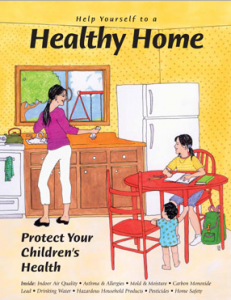 If your child has frequent bouts of allergies and colds, the culprit could be hiding right at home under the guise of mold, animal dander, dust mites and chemicals found in everyday products.
If your child has frequent bouts of allergies and colds, the culprit could be hiding right at home under the guise of mold, animal dander, dust mites and chemicals found in everyday products.
Here are 5 easy ways to reduce indoor pollution and lead a safe life.
Ventilate often: Ventilation is very important on today’s day and age where smog, airborne chemicals from perfumes and room fresheners can linger on irritating asthmatics. Closed doors and windows are also a free passage for mold and fungus to develop. Ventilation drives away humidity, in which molds and fungus thrive. Contrary to popular belief, cold air outside will actually do you good rather than staying in a stuffy room that doesn’t allow allergens and harmful chemicals to escape. If the day is hot, using an air conditioner is a wise idea.
Dust mite free life: Unfortunately, it is impossible to lead a dust mite free life unless you are living in a sterile environment. Dust mites are usually found in mattresses and pillows. To prevent them from making your bed their home, cover your mattress with a non permeable sheet. Usually, dusting is enough to get rid of 80% of dust mites, but it is not every day that we dust our mattresses. So an opaque cover on the mattresses works the best.
Keep humidity at bay: Humidity causes mold, fungus and attracts microorganisms to breed. Not only do these cause allergies but also serious infections that can go undetected and are difficult to diagnose once contracted. So make sure there is no mildew accumulating on your walls, bathrooms and cupboards. Ideally humidity should be maintained below 50%.
Pet dander peeves: Pet dander is omnipresent in a house with pets. But if your child is allergic to it, it is time to reconsider having a pet at all. If that isn’t an option, vacuum rugs, sofas, carpets and curtains regularly. Consider having a pet free room in the house where your child can have reprieve.
Gas stoves and asthma: Gas stoves or ovens emit NO2, Nitrogen Oxide that is dangerous to kids who already have asthma. Make sure your child isn’t spending too much time inside a kitchen, especially when there is little or no ventilation.
Household’s products and how they pollute
Household products come packed with disinfectants but do not guarantee against allergies. Perfumes and chemicals present in them can also trigger allergies. Choose fragrance free products that are hypoallergenic.
Indoor plants
Avoid indoor plants like water bamboo that accumulate stagnant water. It attracts mosquitoes and flies that cause dengue and malaria. Some indoor plants are known to reduce indoor pollution too. If you must have indoor plants, choose the ones are known to help clear air pollutants.
Do children need vitamin supplements?
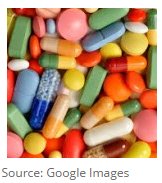 During my residency days I was under the impression that the head of my department was a tyrant (I now believe that residents are supposed to feel that way) but as the years go by there are so many instances when I remember him with gratitude. My carelessness at certain tasks would not escape his observant gaze….from misspelling I’s and e’s in prescriptions to answers I gave from hearsay without actually reading my textbook. One busy day in the OPD he told me that I had prescribed multivitamins to twelve children and asked me for the reason.” Nothing major sir,” I said spiritlessly (by then I had learnt that honesty was my only defence) “their mothers were not happy with their appetite and nothing was really wrong with the children…”. “Dr Krishna,” he said sincerely, “you should know that you are accountable for everything you do…how many prescriptions would you actually have written if the parents concerned could not afford to buy the medicine?” I think the answer was two. Since then I have always thought twice before prescribing anything.
During my residency days I was under the impression that the head of my department was a tyrant (I now believe that residents are supposed to feel that way) but as the years go by there are so many instances when I remember him with gratitude. My carelessness at certain tasks would not escape his observant gaze….from misspelling I’s and e’s in prescriptions to answers I gave from hearsay without actually reading my textbook. One busy day in the OPD he told me that I had prescribed multivitamins to twelve children and asked me for the reason.” Nothing major sir,” I said spiritlessly (by then I had learnt that honesty was my only defence) “their mothers were not happy with their appetite and nothing was really wrong with the children…”. “Dr Krishna,” he said sincerely, “you should know that you are accountable for everything you do…how many prescriptions would you actually have written if the parents concerned could not afford to buy the medicine?” I think the answer was two. Since then I have always thought twice before prescribing anything.
Vitamins are undoubtedly essential for synchronised body functioning (for enzymes to digest food, for blood to clot, for the strengthening of bones and cartilage, for nerves to transmit impulses, for hormones to be secreted, for wounds to heal, for immunity and for the eyes to see) and not just for growth. Since they cannot be manufactured in sufficient amounts by the body, and must be taken in from the environment. With the exception of vitamin D, which is manufactured by the body in response to sunlight exposure (wherein research says that 15 minutes a week of such exposure is all that is needed), all the others are naturally supplemented by a balanced diet. Vitamins occurring in their natural forms are the easiest for the body to use, and accompanied by important related compounds enabling their absorption and assimilation by the body. So are we over prescribing and overrating commercial nutritional supplements? Well, the answer is a tricky one.
Also Read: Do Teen Daughters Need Supplements?
Let me first list out the conditions when vitamin supplementation is mandatory.
Vitamins A, D, E, and K are called fat-soluble vitamins and are stored in the fatty tissues of the body and in the liver. They wait around in your body and when it’s time for them to be used, special carrier proteins take them to where they’re needed. So overloading on them can have toxic effects on the body. Water-soluble vitamins (vitamin C and the B complex as they are usually called) don’t get stored as much and travel through the bloodstream. Whatever is in excess is flushed out by the kidneys. So a child with a liver disease, a kidney disorder or a malabsorption syndrome (a condition where dietary nutrients do not enter the bloodstream) will need vitamins in doses above the RDA (Recommended Dietary Allowance, or the amount needed every day) for prolonged periods.
Babies get most of their nutrition a few weeks before birth and therefore those born preterm have insufficient reserves and they require vitamins and minerals to be supplemented.
Sometimes a long course of medication like medicines given for fits, prolonged fevers like typhoid, heart problems etc. require vitamin supplements in order to break down the drug and replace the reserves that get exhausted.
Breastfed babies require no vitamin supplements unless the mother is deficient. We prescribe vitamins usually after solids are introduced and formula is discontinued. Many paediatricians make an exception to this and suggest Vitamin D supplements throughout the first year. This is because research shows a prevalence of vitamin D deficiency of 50-90 % in our country (attributed to low dietary calcium, skin colour and limited outdoor activity).It is also because vitamin D is now quoted as a preventative miracle vitamin for everything from cancer and diabetes to heart disease and multiple sclerosis.
Also Read: Should we Worry about Vitamin D?
I believe that several aspects of our lifestyle do not contribute to good nutrition. The tiny portions of fruit and veggies our children cut a deal to eat are not totally fresh and hygienic. Busy schedules have made processed snacks and energy drinks obligatory. Carbonated drinks leach vitamins and minerals from the body. A diet that includes milk and dairy products like cheese and yogurt, plenty of fresh fruits and leafy, green vegetables, protein like chicken, fish, meat, and eggs and whole grains oats and brown rice rules out vitamin deficiency (except for vitamin D).
For children who aren’t eating regular, well-balanced meals ( eating a lot of fast foods, convenience foods, and processed foods),finicky eaters, and those who play physically demanding sports, giving vitamins is akin to providing a safety blanket to avoid guilt. Vitamins cannot increase appetite if you are not deficient in them. Please look to activity levels, and emotional and hormonal imbalances when you notice a lack of appetite instead of self-prescribing your child vitamins.
Kids on a strict vegetarian diet need an iron supplement and those on dairy-free diet may need a calcium supplement and not just vitamins.
So coming back to the question, I will say that healthy kids do need vitamin supplements. Not always, but sometimes and for some time.
Re-published with permission from the blog of ParentEdge, a bi-monthly parenting magazine that aims to expose parents to global trends in learning and partner with them in the intellectual enrichment of their children. This blog has been written by Dr. Krishna Mahathi, she holds diplomas in Pediatrics and in the management of allergies and asthma. Years of working and interacting with children and parents have given her insight into developmental disabilities. She wishes that there was more awareness and acceptance of the issues that differently-abled children face and hopes that through this blog, she can enable thse children and their families to make sensible and informed choices.
Christmas Vacation Recipes for the whole family
A brilliant way to make the most of Christmas vacations is to engage your children in making homemade gifts for relatives and friends. Homemade gifts are a message that the receiver is important enough for you to spend time thinking of a gift idea and making it yourself. We’ve put together a few easy to make recipes that will be fun and make an ideal homemade gift.
Nothing gets pre-schoolers going like a mashable play-doughy type of material to squish between their fingers. Now imagine if you could get them to use something like that to make ginger bread dough that is edible! Sounds exciting, doesn’t it? Let’s begin! [Read more…]
Christmas Celebrations: A fresh take on the tradition of Giving
Holidays are a joyous and memorable occasion that we share with our friends and family. We keep the tradition of giving by exchanging gifts and spending quality time together.
However, for many families, the struggle for survival does not change with the arrival of festivities. Sharing or exchanging gifts is not a possibility. We could acknowledge the blessings we have by giving back to people from disadvantaged background, at the same time keeping the spirit of giving alive. [Read more…]
Practising spirituality with children, the Play-Way method
We all have been given a mission to be spiritual companions to our children, grandchildren, and young friends. There are many blessings to be shared across the generations. We also can do more to respect and cherish children’s spirituality. How do we express it? Through creativity, sharing experiences, narrating stories, questions and much more. [Read more…]
